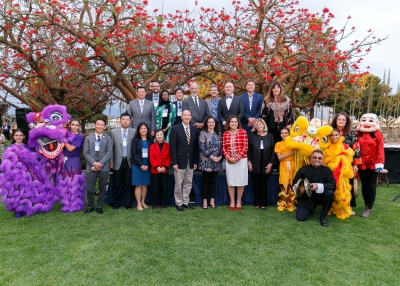Race, Sex, and Gender in the Chinese Language Classroom
Takeaways from a Presentation at the 2019 National Chinese Language Conference

Editors Note: At the National Chinese Language Conference in San Diego, CA, five Chinese language instructors boldly presented their findings and recommendations on teaching around race, sex, and gender in the American Chinese language classroom. Following is a summary of the author's takeaways.
By Eleise Jones
Every language has potential for funny or uncomforable moments when taken out of context. Natually, these are perfect moments for learning! Much of language is shaped and enforced by cultural values, and many teachers admirably want to be aware of potential pitfalls and equipped to address sensitive issues when their students have questions.
Addressing Discriminations and Stereotypes in the Chinese Language
Like most Chinese language teachers, Ruan Ye of York Prep in New York, NY teaches Chinese characters through radicals. For instance, there is the radical 女, meaning female. We find this radical in the compound characters 她 (she/her), 妈妈 (mother), 姐姐 (younger sister), and 妹妹 (older sister). These all make immediate sense as they refer to the female sex.
But when we teach 嫉妒 (jealousy) and 姦 (evil), students may ask: Why do these two characters both contain female radicals? Why do three females together connote evil? Furthermore, why does the 男 (male) always appear before 女 in compound characters?
Ruan doesn’t try to avoid answering these questions. Instead, she tries to put herself in an American student’s shoes, and uses the opportunity to discuss each character and enforce the positive in the language students are learning. It can be a learning experience for teachers as well as students.
Adding Nuance, Avoiding Stereotypes
Jonathan Fall, from San Leandro High School in Oakland, CA, believes that students want us to see them as individuals—not ethnic or religious groups. But he also recognizes they often lack awareness about Chinese culture. “A lot of students come to my classroom not knowing much about Chinese. They ask me if we’re going to learn karate, and I have to tell them that it’s Japanese.”
Fall teaches an understanding of China’s ethnic minorities. Almost 10% of Chinese might go their lives without speaking Mandarin despite living in China. He teaches that, just like in America, Chinese are more than traditional images of minorities. There is soccer in Xinjiang province, different religions are practiced, Chinese have differing views on their government, and so on. “Just because we’re not social studies teachers doesn’t mean we can’t use current affairs to practice language.”
How to Make Your Classroom a Safe Space
Preston Sundin, a teacher at Emma Willard High School in Troy, NY, bears in mind that his students are still discovering and forming their own gender identities. He recommends that language teachers become familiar with important terms such sex, gender, gender identity, cisgender, and transgender. He makes small, intentional steps each day—for instance, designing lessons that include thoughtful photos of an array of diverse family compositions. He understands it is not necessary to draw attention to the images, but students will absorb them. Examples include restroom signs reading “unisex” (中), and depictions of women and men in non-traditional roles.
When it comes to assigning Chinese names, he tells his students that if they would like a more neutral or female/male-sounding names, that’s fine. Names are a small thing, but language is very important and powerful for high school students who are just beginning to assert their autonomy.
The Use of 那个 in a North American Chinese Class
Jessica Harding, from Culver Acadamies in Culver, IN, cautions that there may come a day when a student will recognize that 那个 sounds a lot like an English racial slur against black people of African descent. Teachers should consider how hearing 那个 might sound to our Chinese learners, especially those who are American or Canadian, and initiate a discussion about it.
By contrast, younger students may not immediately connect 那个 with the n-word, and therefore discussion may be unnecessary. If students do ask about it, however, teachers should help students to understand that it is like saying “um” in English. For older students, explain it is a verbal filler (like “um”) and ask students to consider how they would react if they learned that “um” was an offensive slur in another language. For younger students, this can be addressed by comparing “taco” in spanish and “tako” in japanese—two different meanings in different languages.
If you are nervous about addressing any of these topics in your class, consider reaching out to a diversity coordinator or your colleagues. Learning how to talk through these issues with students in a mature manner shows them that we all have to grapple with difficult issues when we’re learning a new language and different culture. This challenge is worth the while to come out on the other side of understanding.
Additional Resources
By Chu Hsi Tseng of International School of the Peninsula, in San Francisco, CA:




